The Complete Guide to Driver-Assistance Technologies
Here's what the most common driver-assistance systems can do.
Updated March 1, 2024
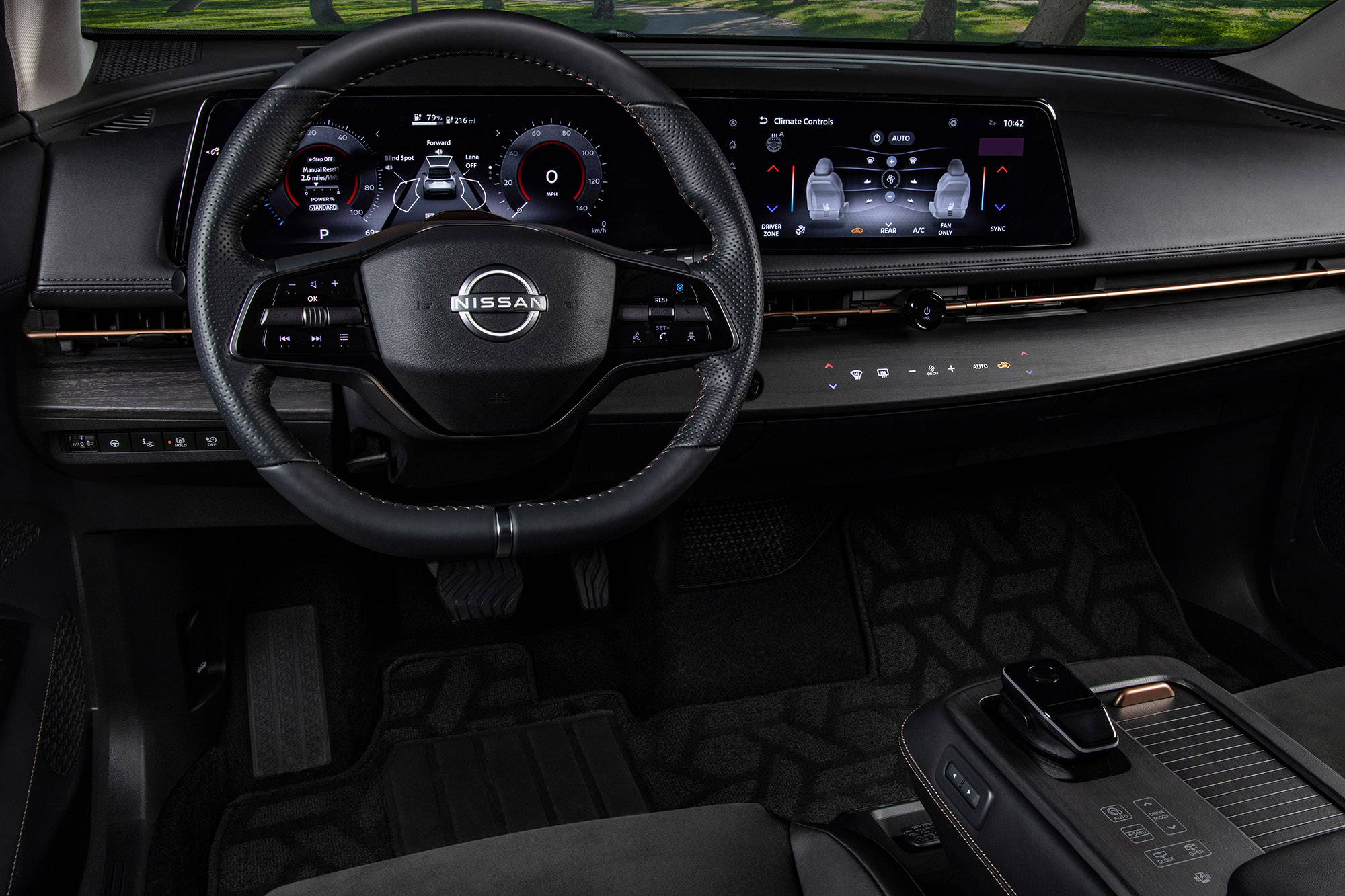 Nissan
Nissan
Advanced driver-assistance systems (ADAS) use various sensors to monitor a vehicle's surroundings and make driving tasks easier and safer. While some people (and at least one automaker) refer to these systems as self-driving technology, not one is capable of assuming full control of the vehicle. Even the most sophisticated driver-assistance tech relies on a human in the driver's seat to pay attention to the surroundings and take over in the event a system fails to perform.
Automakers often lump these driver aids into branded packages, such as Tesla Autopilot and Full Self-Driving Capability, Honda Sensing, Ford Co-Pilot360, Kia Drive Wise, Jaguar InControl, Mercedes-Benz Intelligent Drive, and Volvo Drive Pilot. Basically, if your car's tech suite plays with words about logic or has some form of sense, cruise, or pilot in its name, it may contain at least a few ADAS features.
Whether you're shopping for a new car or wanting to take advantage of your current car's features, make sure you understand the capabilities and limitations of each system before you use it. This glossary gives you an overview of what modern vehicles offer. You can find more specific information in a vehicle's owner's manual.
Active highway guidance: Vehicles with this feature can ostensibly move through traffic from on-ramp to off-ramp according to a preset route, negotiating interchanges and switching lanes as necessary. Currently, only a handful of vehicles can perform all these tasks, including Tesla models with Navigate on Autopilot and Nissan Ariyas with ProPilot 2.0.
Active/automatic lane-change assist: With adaptive cruise control engaged, vehicles with this feature can execute lane changes for you. Some automakers, such as Hyundai, require drivers to initiate the maneuver by hitting the turn-signal stalk. When the car deems it's safe to do so, it will follow that command. Tesla, however, gives drivers the option of confirming each lane change or leaving the decision up to the car.
Adaptive cruise control: Unlike regular cruise control, which maintains a set speed unless you take action, adaptive cruise control monitors other vehicles via radar, lidar, and/or cameras and automatically adjusts your car's speed. As you approach a slower-moving vehicle, Adaptive cruise control decelerates your car to maintain a safe following distance. Should you move to an open lane, your car will accelerate to the set speed. You may override adaptive cruise control at any time with the pedals.
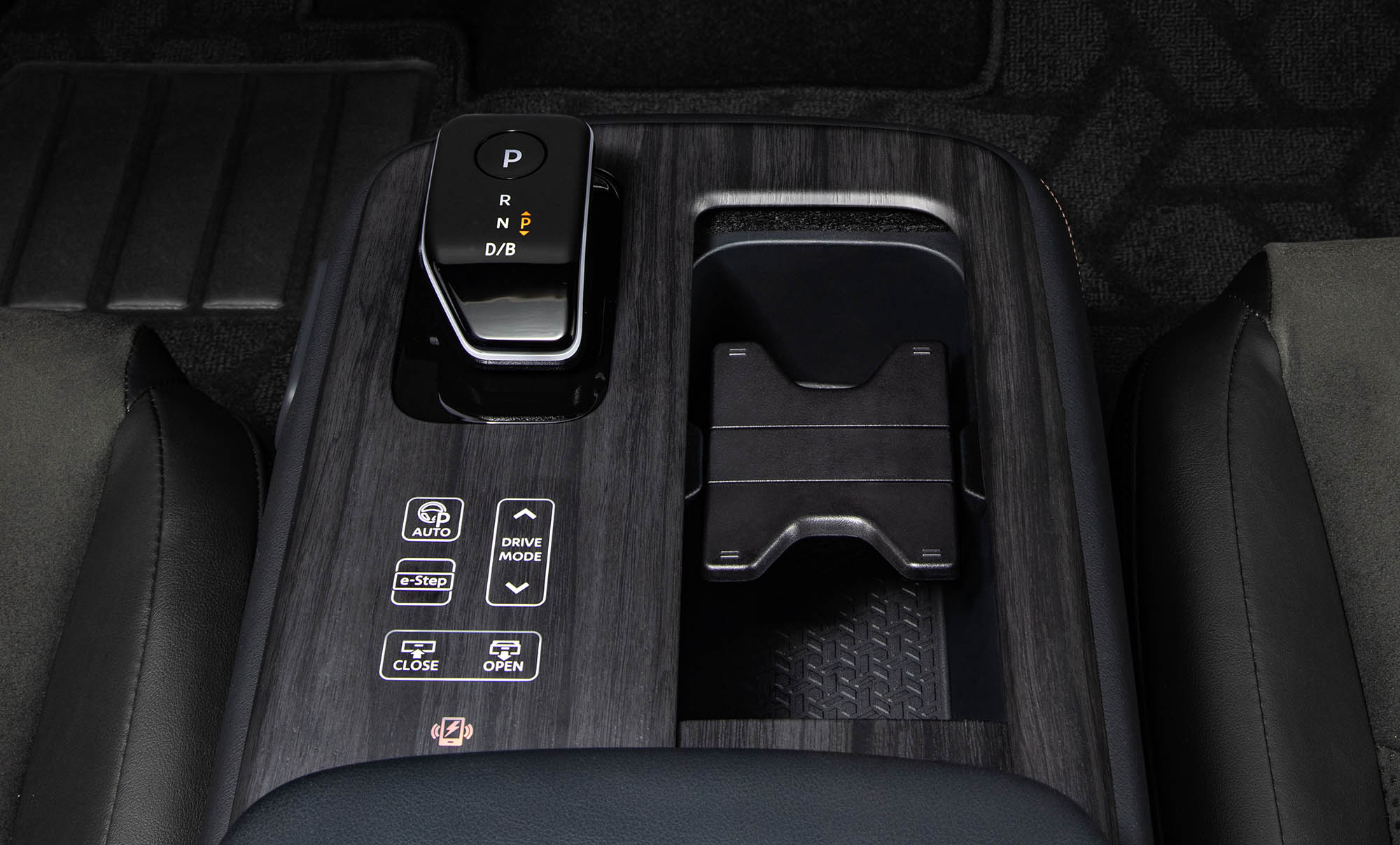 Nissan
Nissan
Automated emergency braking: A collision-mitigation technology, automated emergency braking uses various forward-facing sensors to anticipate an imminent crash with the vehicle ahead and applies the brakes to avoid or lessen the severity of impact. Some automakers are installing rear-facing sensors, too, to prevent drivers from backing up into things. This is called rear automated emergency braking.
Certain systems even have the ability to detect and stop for pedestrians and cyclists. The National Highway Traffic Safety Administration (NHTSA), impressed by the injury-reducing effectiveness of this intervention, asked automakers to voluntarily make AEB standard on all new vehicles by September 2022. Most complied, and 90% of light-duty vehicles now come with the feature.
NHTSA would like to see that jump to 100% and recently proposed a rule to that effect. If approved, all automakers would be required to fit their vehicles with an advanced version of AEB — one that can detect pedestrians and cyclists at any time of day and bring a vehicle to a stop from speeds as high as 37 mph.
Automatic/adaptive high-beams: As the name implies, this feature automatically switches on your vehicle's high-beams in appropriate low-light situations and shuts them off when it spots the headlights or taillights of other vehicles. The most advanced headlight systems use LEDs and can selectively dim diodes so the light pattern shines around oncoming traffic, not at it.
This keeps peripheral areas bathed in light but won't impair the vision of other drivers. In the U.S., NHTSA is working to finalize a set of testing procedures and rules to evaluate these systems. In the meantime, automakers may advertise future-ready adaptive headlight setups.
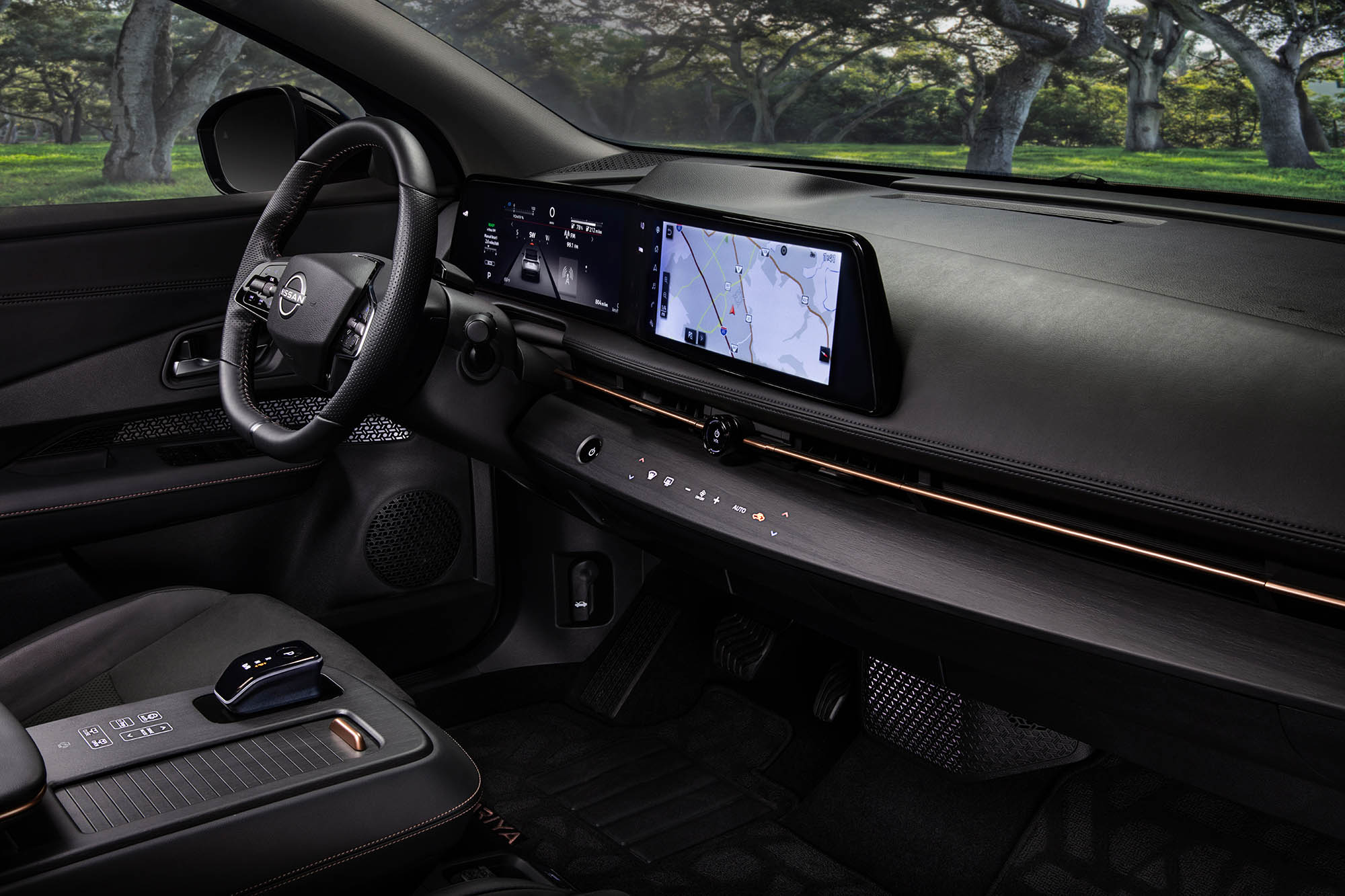 Nissan
Nissan
Blind-spot monitoring: This system gives the driver visual warnings when it detects — via cameras, radar, or ultrasonic sensors — another vehicle lurking next to your car's rear-quarter panel. If you signal a lane change with a vehicle in your blind spot, the system will beep at you and typically flash a light in the side mirror or A-pillar.
Some automakers, such as Ram and Ford, offer blind-spot monitoring on their pickup trucks that extends the coverage area to an attached trailer. Kias equipped with a blind-spot view monitor will actually show you — in the digital instrument cluster — what's in your blind spot when you signal a lane change.
Safe-exit monitoring: To make egress from the vehicle safer on busy streets, rear-bumper sensors monitor approaching traffic and, should you unlatch your door as a cyclist or vehicle approaches, your car will issue a visual and/or audible warning.
Drowsiness detection: This system will encourage the driver to take a break if it detects consistent signs of drowsiness, such as frequent jerks of the steering wheel. Some go a step further, employing a driver-facing camera to track eye movement over the course of the drive. The most advanced drowsiness-detection systems account for lane deviation, turn-signal use, trip length, road conditions, and time of day.
Evasive steering assist: If you swerve to avoid a collision but are still in jeopardy of hitting an object, evasive steering assist kicks in to give the steering wheel an extra nudge to help you maneuver around the obstacle. It's important to note that the driver must start turning the wheel for the system to activate.
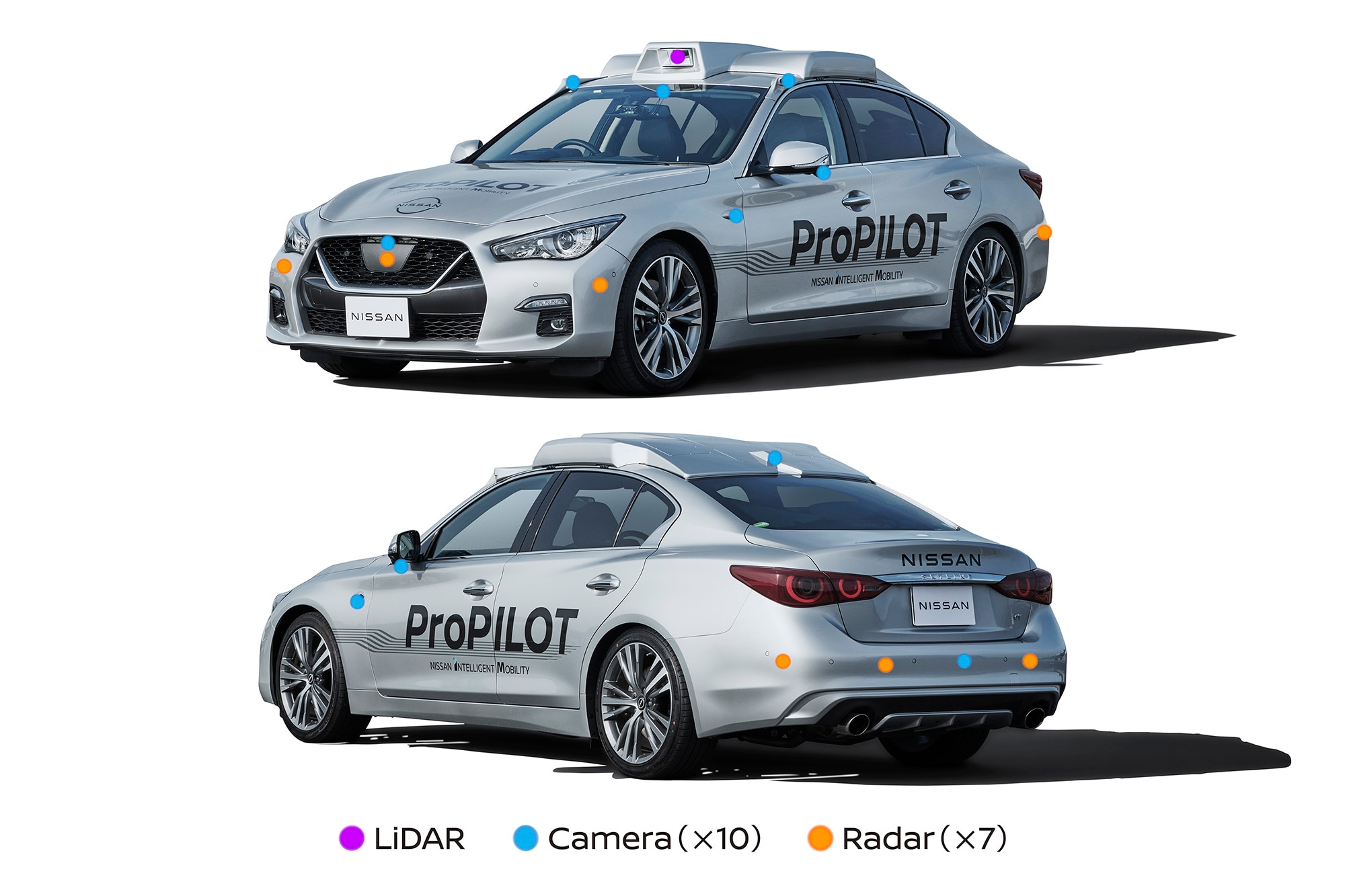 Nissan
Nissan
Forward-collision warning: Approach another vehicle too quickly and this system will alert you to slow down with audible, visual, and sometimes vibratory alerts.
Hands-free driving system: On certain highways, a vehicle equipped with this technology can accelerate, brake, and follow the road lines well enough for the driver to remove their hands from the steering wheel. As of December 2023, all hands-free driving systems offered in the U.S. require the driver to remain alert and ready to take over at any time.
The list of automakers providing such technology includes General Motors, with its Super Cruise system; Ford, with BlueCruise; BMW, with its Highway Assistant; Lexus, with Teammate; Nissan, with ProPilot 2.0; and Mercedes-Benz, with a limited release of Drive Pilot. Tesla's Full Self-Driving tech still requires hands-on-wheel support, despite user attempts to find workarounds.
Lane centering: This system reads the lane lines and actively steers to keep your vehicle centered between them. Unless the manufacturer says otherwise, the driver must keep their hands on the wheel when using lane centering, even though it may seem as if the vehicle is capable of driving itself.
Lane-departure warning: Should your vehicle wander outside a lane line when you haven't engaged the turn signal, you'll hear — and possibly see and feel — an alert from this feature.
Lane-keeping assistance: This system guides a drifting vehicle back into formation with subtle steering corrections, but unlike lane centering, it won't constantly correct your heading to the middle of the lane. If the driver doesn't keep the vehicle tracking near the center of the lane, the car may ping-pong between the left and right lane markings.
Night vision: In low light or poor weather, a sensor (often an infrared camera) on the front end of the car looks beyond the range of the headlights for potential hazards, such as pedestrians or animals, and displays them in the gauge cluster, center screen, or head-up display.
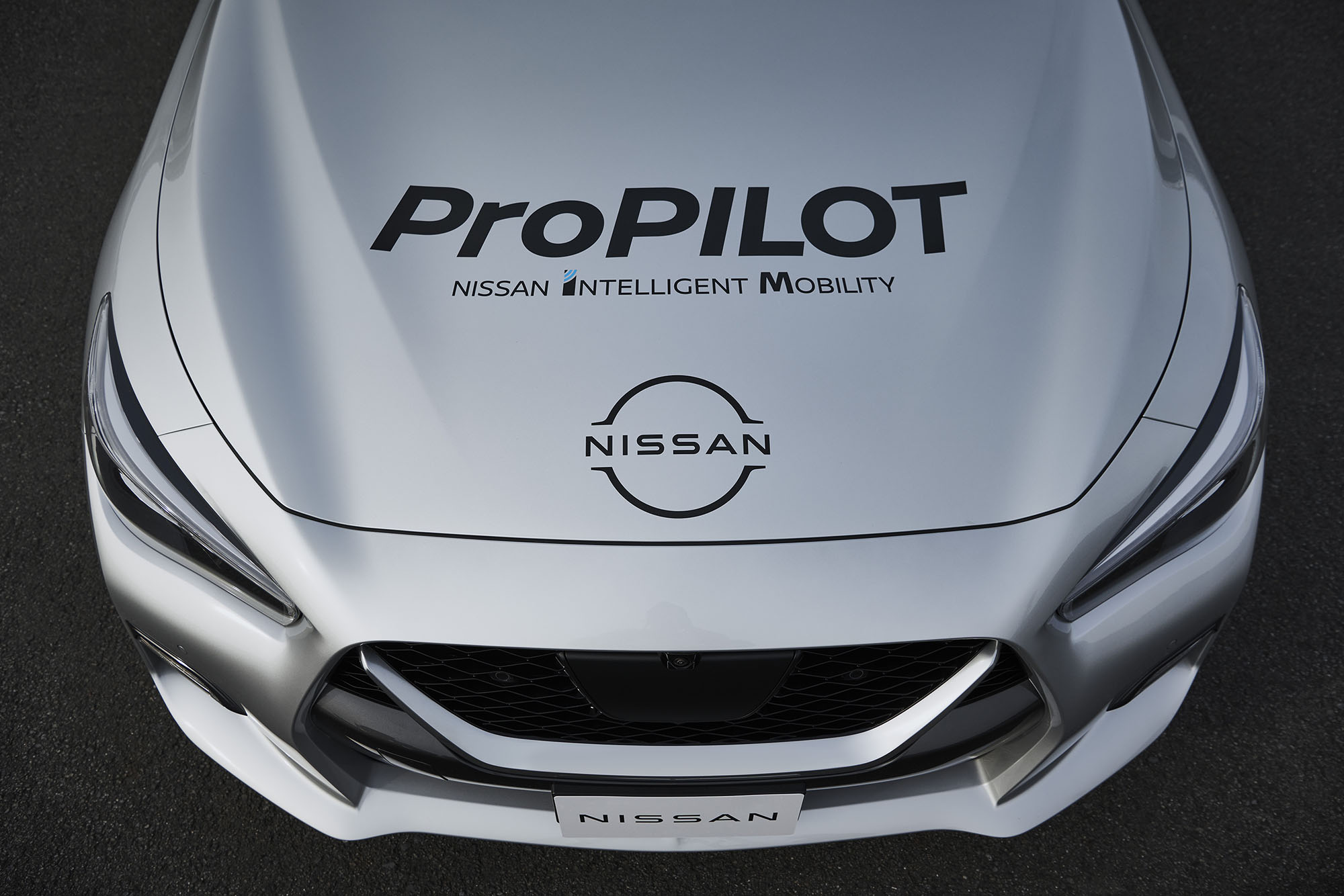 Nissan
Nissan
Parking assist: The car — relying on various sensors and cameras — calculates and executes the steering inputs to guide itself into and out of a parallel or perpendicular parking spot. The order of operations varies by make, but typically, it goes something like this: Hit a button to tell the car to scan for spots. Once it finds one, the car will direct you to stop, shift gears, and remove your hands from the wheel. It will then move slowly into the spot as you monitor its progress.
Some systems accelerate and brake, others require the driver to work the pedals. Either way, the driver can intervene at any time and remains responsible for any mishap.
Rear-cross-traffic monitoring: With the vehicle in reverse, this system looks beyond the scope of the rearview camera to detect and alert you of any approaching hazards — pedestrians, animals, other vehicles — that might cross your path. Some merely beep at you to stop, while others tell you from which direction the hazard is coming.
Remote parking: This allows the driver to stand outside the vehicle and direct it to drive straight into or out of a tight parking space with a smartphone app or key fob.
Remote valet: Pioneered by Tesla, this feature (which it calls Smart Summon) allows the driver to beckon their vehicle from a distance using a smartphone app. The car then unparks itself and, using GPS, navigates the lot/street to pull up next to the driver.
Various sensors and cameras aim to prevent the car from driving into other vehicles, pedestrians, or stationary objects, but they're not always successful, making remote valet a risky feature to use.
Speed-limit assist: With adaptive cruise control active, the vehicle monitors the posted limit and adjusts your speed to match it. Some speed-limit assists can also be set to drive at a preselected offset, such as 5 mph above or below the posted speed.
Surround-view camera system: Also called a multiangle or 360-degree camera system, this feature uses a suite of exterior cameras to show the driver what's going on around the vehicle, displaying the feeds on the infotainment screen. Meant primarily as a parking aid, surround-view camera systems generally work only at low speed, and many superimpose guidelines onto the images to help you orient your vehicle.
Common vantage points include front-bumper, trailer-hitch, and rear-quarter-panel views as well as an aerial shot, made possible by stitching together the images from multiple cameras.
Traffic-jam assistance: Many adaptive cruise control systems allow for stop-and-go operation (also known as low-speed follow or traffic-jam assist), meaning that even if heavy traffic causes adaptive cruise control to bring your car to a halt, the system will remain active and accelerate (and brake) when the vehicle ahead of you does. Less advanced ACC systems time out after coming to a stop or require the driver to confirm when to move again.
Traffic-light and traffic-sign recognition: While not always bundled together, traffic-light and traffic-sign recognition work very much the same way. A forward-facing camera reads the signal or sign and displays it in the digital instrument cluster. It comes in handy when you miss the posted speed limit or a school-zone sign. Tesla uses this tech to bolster its Full Self-Driving package, which not only reads traffic lights and signs but can react to them.
Trailer backup assist: To make maneuvering a trailer easy, a camera displays your progress, and you can adjust the direction of the trailer by simply turning a knob. The truck will then manage the steering wheel as you work the pedals.
Written by humans.
Edited by humans.
 Beth Nichols
Beth NicholsAfter graduating from the University of Michigan, Beth Nichols stumbled into automotive journalism and found her footing, jumping between a few car magazines before going freelance. Her head, once full of useless facts about literature and art history, now holds useless facts about vehicles. She edits, checks, and occasionally creates content for Capital One, and though she understands it’s customary to write a bio in the third person, I don’t like it.
Related articles
View more related articles